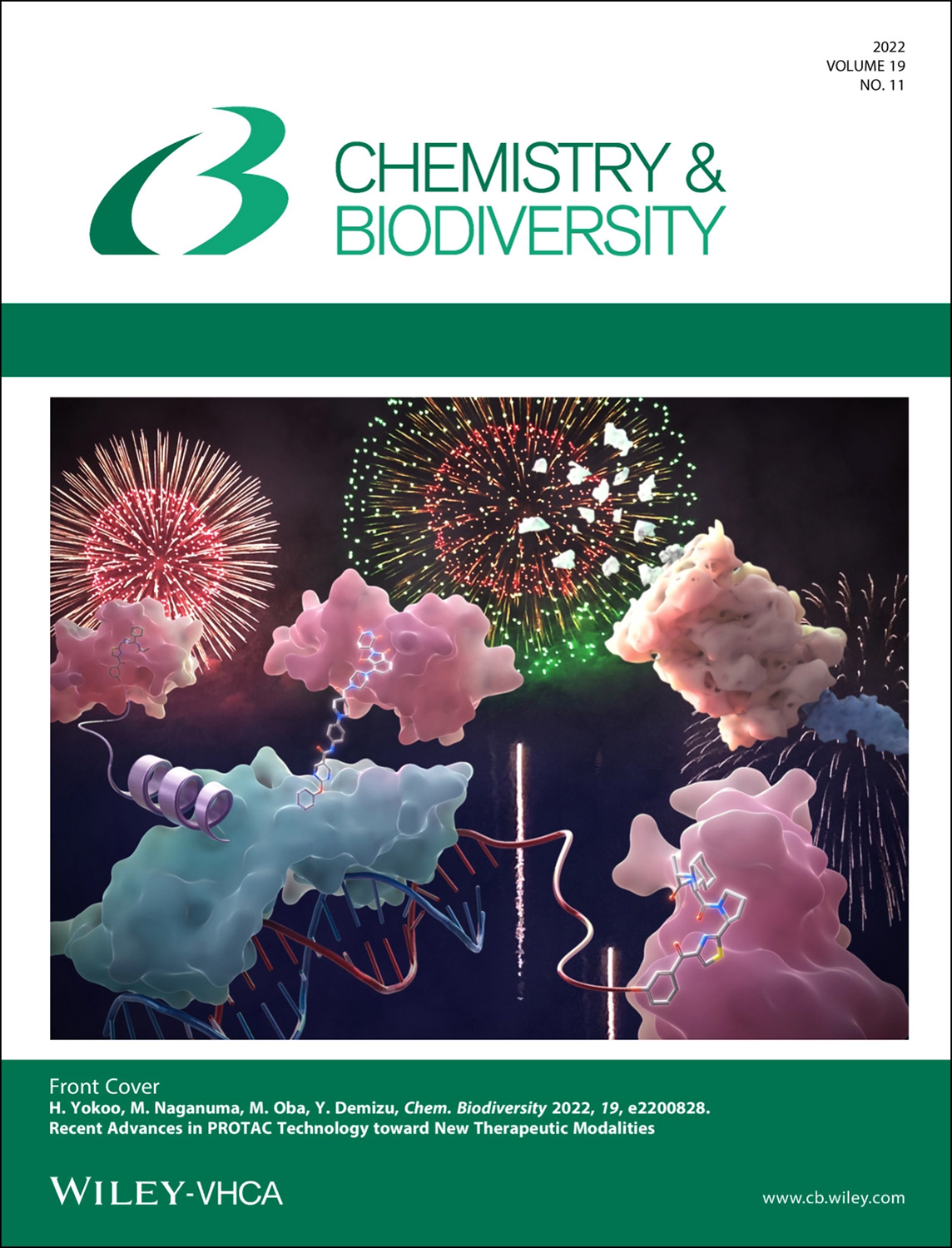論文雑誌「Chemistry & Biodiversity」のカバーピクチャーを制作しました[国立医薬品食品衛生研究所]
弊社で制作しました国立医薬品食品衛生研究所 出水庸介様よりご依頼のカバーアートが
Wiley社が発行する学術雑誌 Chemistry & Biodiversity
2022年11月号 Front Coverに選ばれました。

Client
国立医薬品食品衛生研究所
有機化学部
出水 庸介様
有機化学部
出水 庸介様
Journal
Chemistry & Biodiversity
November 2022, Volume 19, Issue 11 Link
November 2022, Volume 19, Issue 11 Link
Recent Advances in PROTAC Technology Toward New Therapeutic Modalities
Dr. Hidetomo Yokoo, Miyako Naganuma, Prof. Makoto Oba, Dr. Yosuke Demizu
Front Cover. Proteolysis targeting chimeras (PROTACs) have emerged as a powerful technology for the degradation of disease-related proteins by the hijacking of the endogenous ubiquitin-proteasome system. A multitude of bifunctional PROTACs have been developed using small-molecule ligands; one ligand binds to the target protein of interest and one ligand binds to an E3 ligase. The characteristics of those PROTACs vary, including their reversible or irreversible covalent binding to the target protein, their binding to orthosteric and allosteric sites, their agonist or antagonist activity, and their use of multiple ligands, such as oligopeptides and nucleotides. This review introduces the mechanisms and behavior of small-molecule based PROTACs as well as targeted proteolysis techniques using peptides and nucleic acids as targeting ligands, as reported by H. Yokoo and Y. Demizu et al. in their review at 10.1002/cbdv.202200828.
Link
Dr. Hidetomo Yokoo, Miyako Naganuma, Prof. Makoto Oba, Dr. Yosuke Demizu
Front Cover. Proteolysis targeting chimeras (PROTACs) have emerged as a powerful technology for the degradation of disease-related proteins by the hijacking of the endogenous ubiquitin-proteasome system. A multitude of bifunctional PROTACs have been developed using small-molecule ligands; one ligand binds to the target protein of interest and one ligand binds to an E3 ligase. The characteristics of those PROTACs vary, including their reversible or irreversible covalent binding to the target protein, their binding to orthosteric and allosteric sites, their agonist or antagonist activity, and their use of multiple ligands, such as oligopeptides and nucleotides. This review introduces the mechanisms and behavior of small-molecule based PROTACs as well as targeted proteolysis techniques using peptides and nucleic acids as targeting ligands, as reported by H. Yokoo and Y. Demizu et al. in their review at 10.1002/cbdv.202200828.
Link
